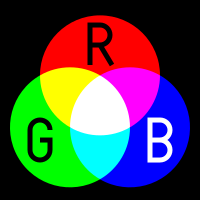 |
 |
 |
 |
|---|
CS 310 Programming Assignment 4 Due: Dec 8th (Saturday) 11:59pm, 2018
- Input/Output
- Examples Page
- Definitions
- Task Overview and Schedule
- Task Details
- Rules Page
- Submission Instructions
- Grading Rubric Page
- Write a program to detect colored "blobs" in an image.
- Learn to use disjoint sets (union-find data structure)
- Apply basic knowledge of Big-O trade offs for primitive data structures
- Blob detection is one of the most fundamental operations in computer vision and image processing and has many many applications; Learn more about blob detection from Wikipedia
- Color blob detection is a specific type of blob detection which can be easily performed with two passes through an image and a disjoint sets, union-find data structure.
- A single bitmap RGB image in jpg or png formats.
- A positive integer k >= 1, the number of blobs "of interest"
- A color to be detected (specified as red, blue, and green values)
- A "distance" from that color that is acceptable (what we think of as "red" is actually many different colors to the computer)
- A file name for the png output
- Blob information to the console (System.out)
- A re-colored image.
Please familiarize yourself with these terms and their definitions before you move on.
- In this assignment, a pixel is a 2D coorindate of an image.
- You can use a pixel to retrieve its color from an image.
- A pixel (w,h) can also be represented as a unique id (h*W+w), where W is the width of the image
- A blob is a set of contiguous pixels.
- A pixel can only belong to one blob.
- Consequently, a blob is a set in the disjoint sets data structure.
- A blob is identified by one of its pixels that is the root in the disjoint sets data structure.
- Colors can be represented in many different ways in a computer (learn more about color models.)
- We will be using the RGB color model for this assignment.
- This is an additive color model where red, green, and blue are "intensities" between 0 (none) and 255 (high) (0->255 is two digits in hex).
- In RGB, the hex value of black is #000000, red is #FF0000, green is #00FF00, blue is #0000FF, and white is #FFFFFF.
- Two colors may be considered to be some "distance" apart (e.g. "black" and "white" are "far away" from each other.
- A smaller distance indicates stronger similarity (e.g. "red" and "dark red").
- For this assignment, the furthest distance between two colors is the distance between pure white and pure black.
There are 4 tasks in this assignment. It is recommended that you implement these tasks in the given order:
- Task 0: Read the given code (0%)
- Task 1: Implement Disjoint Sets (the union-find data structure) (25%)
- Task 2: Implement Helper Methods (20%)
- Task 3: Implement the Detector (45%)
- Task 4: Output (10%)
- (Optional) Task 5: Output Original Image with a "Bounding Box" (5%)
See Task Details Page.
Need a schedule?
- You've got 4.5 weeks.
- You have other classes with final exams/projects.
- Assume you want to spend the last week doing the EC and getting additional help.
- Keeping those things in mind, fill in the following:
- Week 0 (11/08-11/11): _______________________________ (first weekend)
- Week 1 (11/12-11/18): _______________________________
- Week 2 (11/19-11/25): _______________________________ (don't forget the break!)
- Week 3 (11/26-12/02): _______________________________
- Week 4 (12/03-12/08): _______________________________ (remember, Saturday due date, not Sunday!)
See Examples Page. Need more examples? Look in the output folder.
As with all projects in CS310, we have some rules (see Rules Page) and a grading rubric (see Rubric Page). The ImageMagick information is on the Rubric Page.
